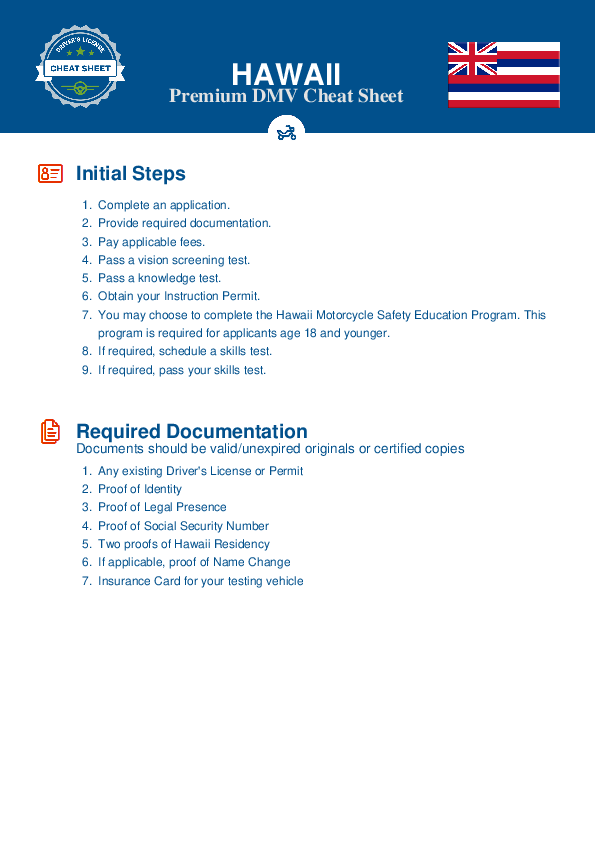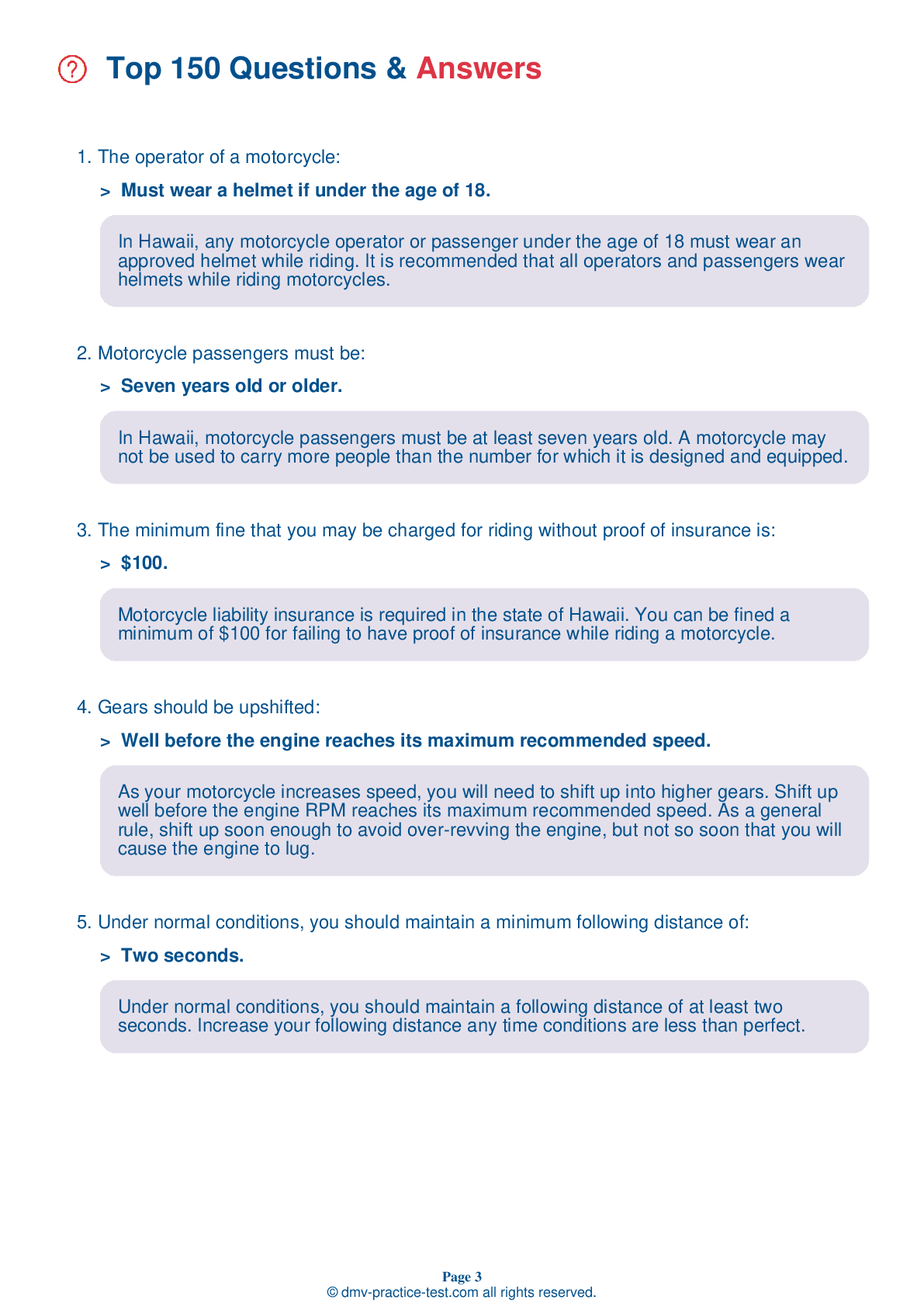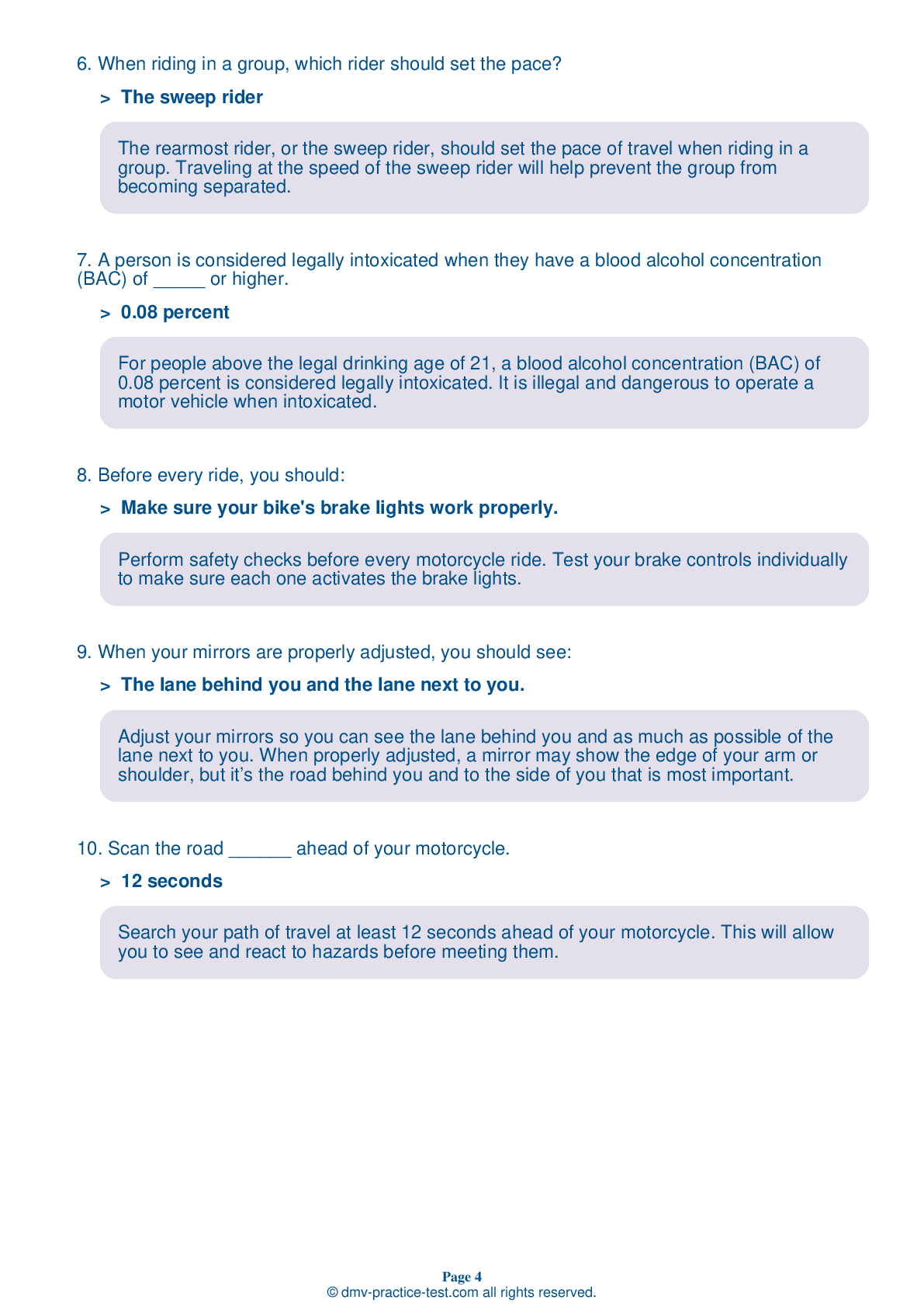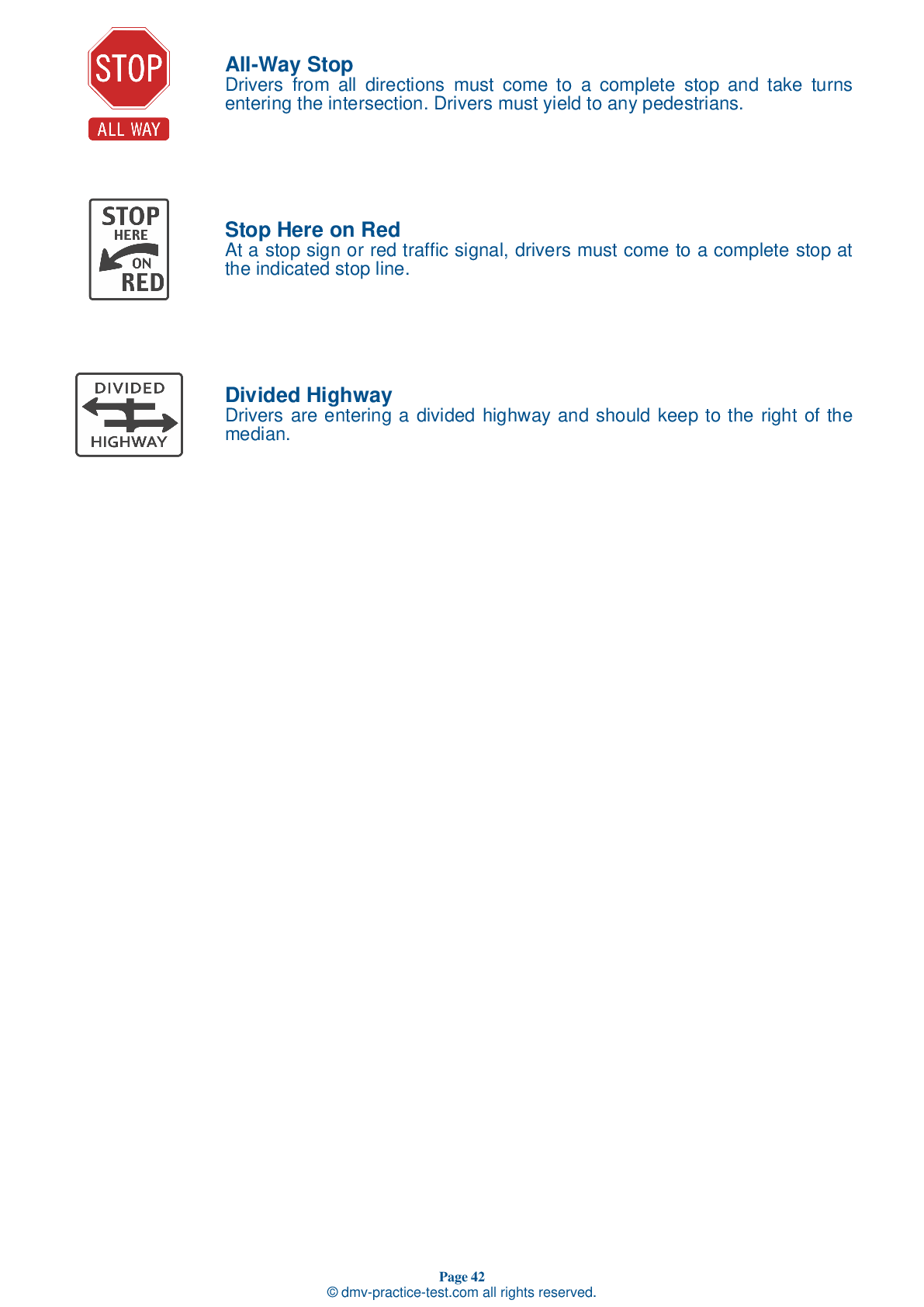Motorcycle Test | License HI 2025 | FREE Online Practice! #6 Page 2 of 4
Take this FREE motorcycle test (license in HI 2025) to check your knowledge of the road rules. To improve your results, download a motorcycle handbook online, study theory, and practice for free on our website. Still worried about how to get a motorcycle license in Hawaii in 2025? Check our website for more sample tests, train as much as possible, and boost your grades!
7 . When gripping the handgrips, your hands should:
Adjust the handlebars so your hands are even with or below your elbows. This positioning allows you to use the proper muscles for precision steering.
8 . A rider's lane position should:
When in an ideal lane position, a rider is visible to other drivers while avoiding wind blasts coming from other vehicles.
9 . Motorcycle riders should choose footwear with soles that:
Choose riding boots or shoes that are high and sturdy enough to cover and support your ankles. Choose footwear with soles made of hard, durable, slip-resistant material.
10 . Experienced riders are aware of what is happening around them. To stay aware, experienced riders use the "SEE" strategy. What does SEE stand for?
Experienced riders use a SEE strategy while riding to make safe judgements. "SEE" stands for Search, Evaluate, and Execute.
11 . Which of the following is not a characteristic of a responsible rider?
Responsible riders are able to ride aware, make critical decisions, and carry out their decisions.
12 . Scan the road ______ ahead of your motorcycle.
Search your path of travel at least 12 seconds ahead of your motorcycle. This will allow you to see and react to hazards before meeting them.
See the exact questions that will be on the 2025 Hawaii DMV exam.
99.2% of people who use the cheat sheet pass the FIRST TIME
Jeneen was tired of paying $5/gallon. She got herself a scooter that required the motorcycle license. She studyed the motorcycle test cheat sheet and passed her test the next day!
Christopher tells us how he knew nothing prior to obtaining the motorcycle study guide, and he only got one question wrong because he clicked on the wrong answer by mistake.



